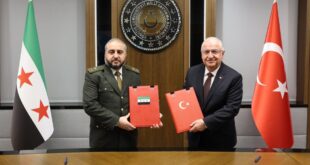AKUEM — Eight months pregnant, Achan Lual headed off into the grassy bush, crisscrossing southern Sudan’s former battlefields, in search of a doctor.
Swollen with twins, the 34-year-old arrived four days later at the only operational health centre for hundreds of miles — a collection of mud huts with thatch roofing.
By any standards, the clinic is basic. Water is taken from a borehole, electricity is powered by a generator and mud has to be re-applied to the walls after a night of stormy rains.
But the centre run by the medical charity Medecins Sans Frontieres (MSF) represents the best chance of treatment in a region of 250,000 people, plagued by malaria and tuberculosis.
A peace deal signed between southern rebels and the northern Khartoum government on January 9 promised development in the south, where 21 years of fighting has deprived it of hospitals, schools and roads.
But eight months on, health workers say nothing has changed.
“When the peace deal was signed, we thought, though there may not be hospitals, there would be at least more clinics,” said Atak Bol, a supervisor in the clinic’s maternity ward.
“Everybody’s disappointed with what’s happening in the south. We expected things to move a lot faster.”
Donors pledged $4.5 billion to rebuild the south at a conference in Oslo in April, but there is scant sign of the money in Akuem, a village on the old front-line.
Former rebel leader John Garang’s death in a helicopter crash, coupled with delays in the formation of a southern government has also added to the sense of stagnation.
Overwhelmed
Frustrated by the lack of other hospitals in the area, MSF says it is overwhelmed by the demand for healthcare to treat everything from malignant tumours and guinea worm to arthritis and head colds.
Oozing abscesses caused by patients injecting out-of-date antibiotics to treat malaria is a common complaint among a population, accustomed to years of trying to cure themselves.
Many people come, having heard about the clinic which provides its patients with three meals a day, and is well-stocked with drugs, mosquito nets and sterile syringes — luxuries that most other hospitals in southern Sudan do without.
The MSF team of three doctors, four nurses and about a dozen junior doctors treated 7,000 people last month alone.
“We’ve got to go on an offensive to better document the needs and pull in more actors,” said Pauline Horrill, MSF programme manager. “We’re overwhelmed, we’re working at full capacity.”
The clinic is braced for more cases as tens of thousands of southerners who fled to northern Sudan or to neighbouring Kenya and Uganda return home, exacerbating problems in a community already suffering food shortages.
“If the trickle becomes a torrent, then we won’t be able to cope,” an Australian doctor said.
Part of the problem, is the difficulty in recruiting health workers from a community where most people are unable to read or write.
The war has bred a generation of guerrillas, and not doctors, nurses, pharmacists or laboratory technicians. Education levels are so low in southern Sudan that health training often starts with a quick lesson in basic anatomy.
In the maternity ward, Lual, suffering pains in her hip and back, summed up the options faced by most southerners.
“Without the clinic, I would have tried to get better at home — and either I would have lived or I would have died,” she said, with a shrug of her shoulder.
 Eurasia Press & News
Eurasia Press & News



